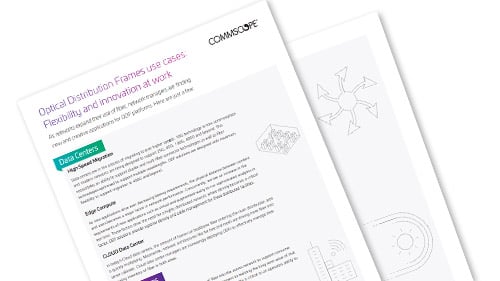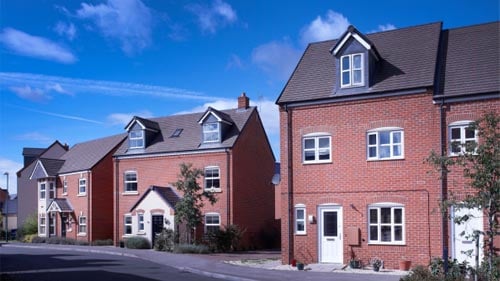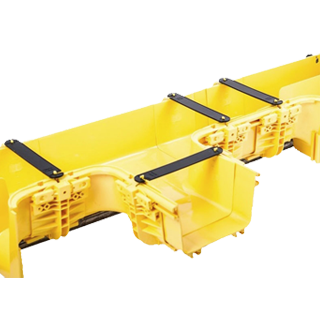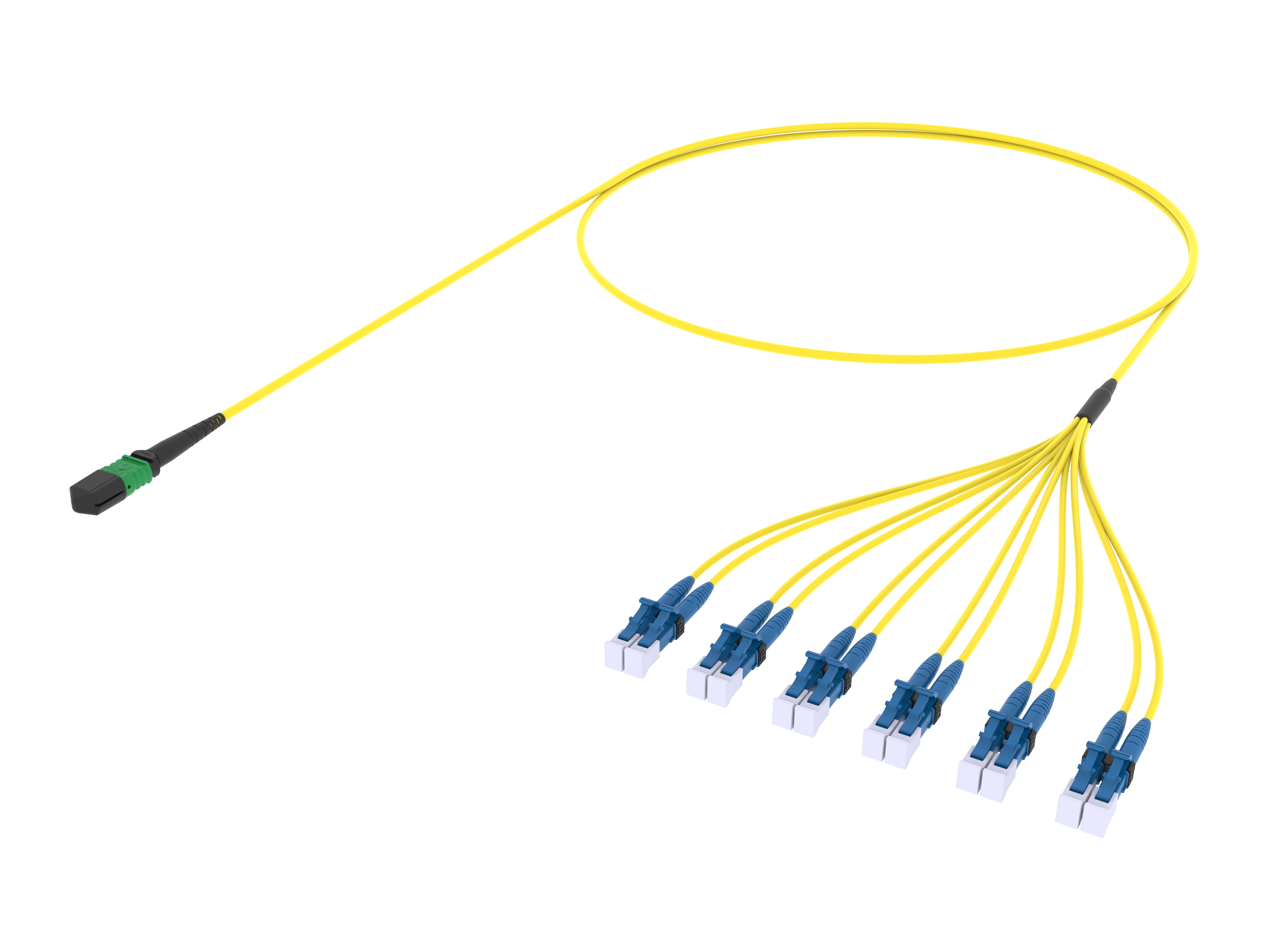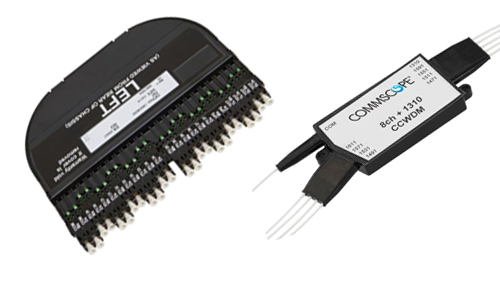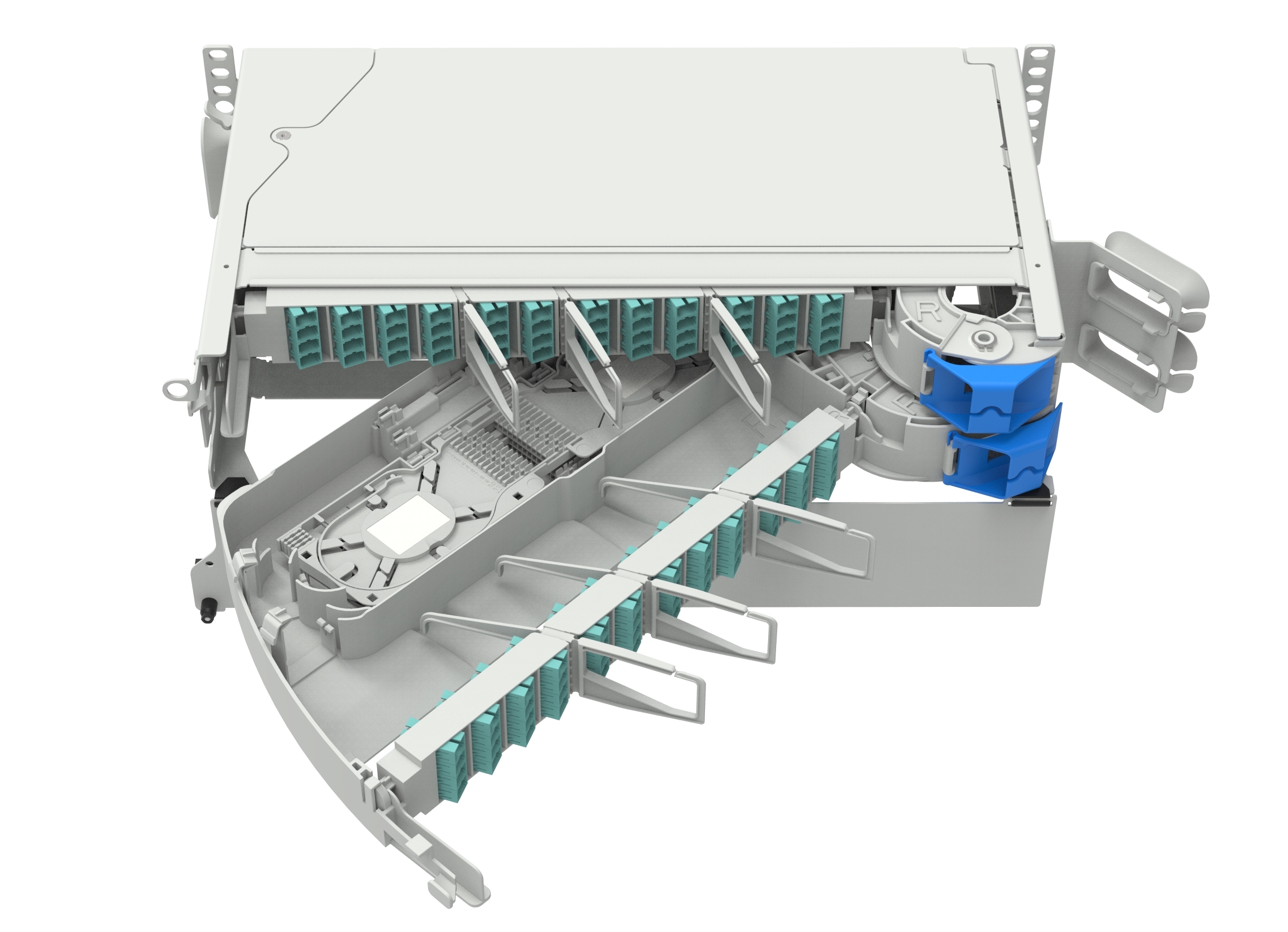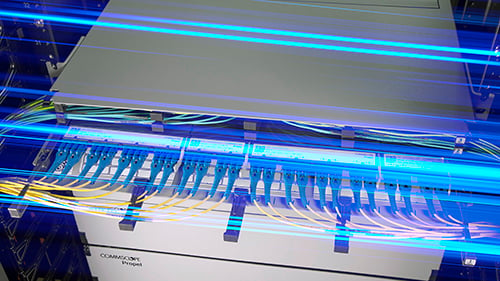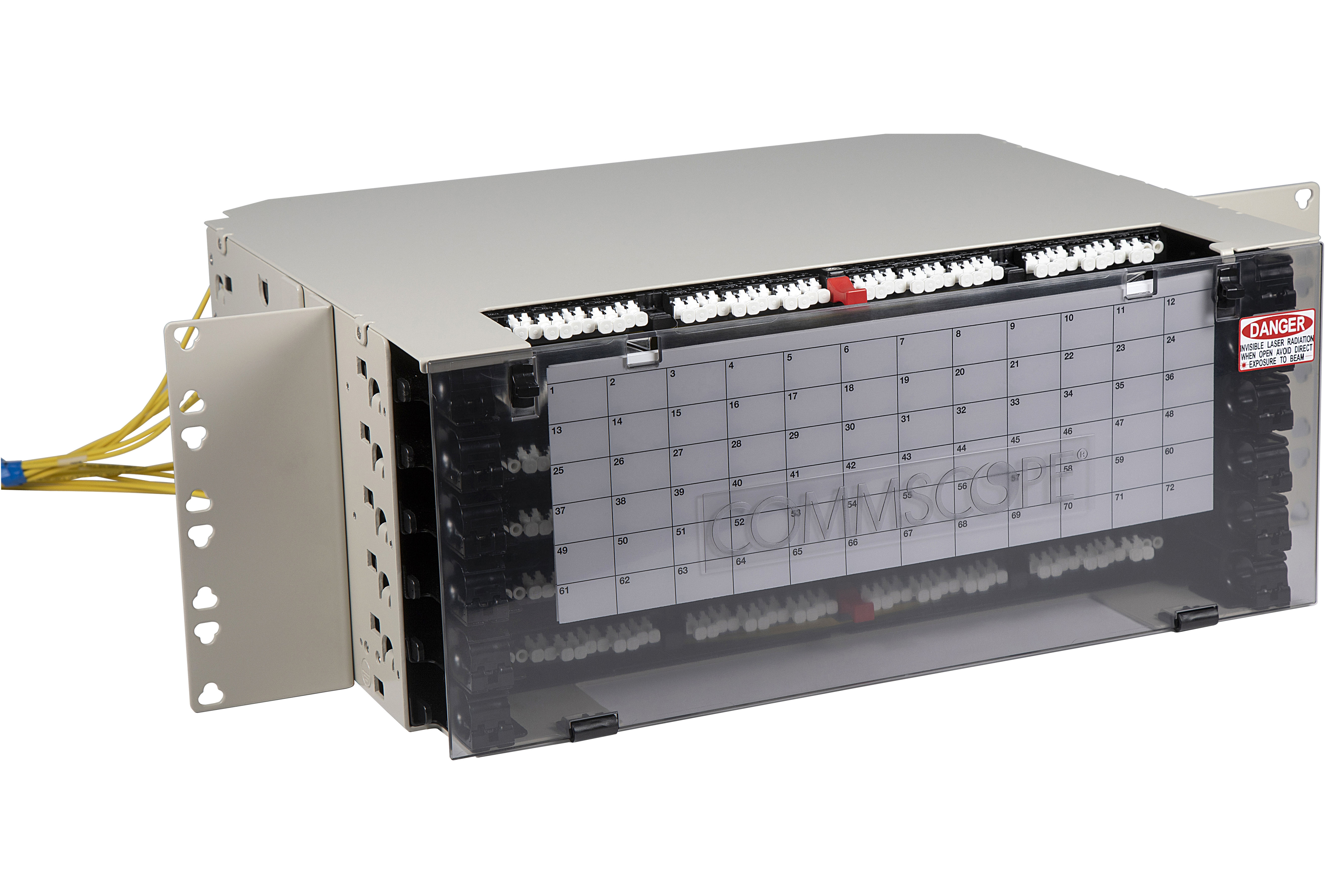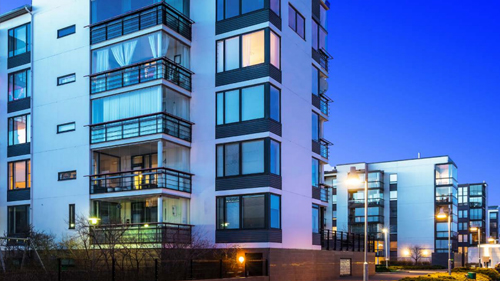An Optical Distribution Frame (ODF) is a central hub in fiber optic networks, crucial for managing and organizing the myriad of fiber optic cables and connections entering a facility. Unlike standard racks and fiber optic panels, they are modular and agile, specifically designed for today’s fast changing, fiber-dense environments that exceed 2,000 fibers. コムスコープの光配線フレームは、どんどん上昇するファイバー密度を管理する長期ソリューションを提供します。
The ODF serves as the flexibility point to make connections between all types of active communication equipment hosted inside the facility, and fiber optic cable used to connect other network locations.
An optical distribution frame has the capability to integrate fiber splicing, termination, and cable connections into a single unit. ODFs are essential in various settings, from data centers to telecommunication facilities such as central offices, exchanges, cable, mobile switching centers, cloud and multi-tenant data centers.
The key building blocks of an ODF include:
- racks or frames, which provide the structural support and fiber management bays
- chassis or blocks, which house the fiber connectors;
- connectivity modules, which can be tailored for specific functions like splicing or patching, splitters, WDM filters and more.
A true ODF system will integrate perfectly with a fiber raceway system, and is not complete without matching cable assemblies that ensure proper connection and signal transmission, such as interfacility cables, trunk cables and of course patchcords or jumpers.
Design considerations
When designing an ODF, one must consider whether to use an Interconnect or Cross Connect setup.
An Interconnect directly connects the equipment to the cabling system, suitable for simpler or smaller-scale applications.
In contrast, a Cross Connect provides a more flexible and scalable system, allowing for easy reconfiguration of network connections, which is ideal for larger, more complex networks.
Other vital considerations include the number of fibers to manage, which dictates the ODF's size and capacity, and the future scalability to accommodate network growth. The choice of ODF should align with the network's current needs and anticipated expansion, ensuring a balance between cost, flexibility, and scalability.
コムスコープを選ぶ理由
![]()
Industry Leading Density with Superior Cable Management
Designed and tested to handle large volumes of connections with efficient cable management, and optimized cable solutions.
![]()
Long Term Agility
CommScope ODFs adapt to evolving network demands, offering flexibility for various deployment scenarios, from small installations to large lineups, including full front access solutions or front and rear access products.
![]()
Lower Total Cost of Ownership
The net effect of modular agility and better cable management. Defer CapEx by maximizing fiber density and port utilization, reduce OpEX related to troubleshooting and re-routing of fibers.
リソース
Flexibility and innovation at work
Use cases
As networks expand their use of fiber, network managers are finding new and creative applications for ODF platforms. Here are just a few.
CommScope helps bring fiber to every UK premise
ケーススタディ
Supporting countrywide rollout with fast, flexible, future-ready solutions
Data center cabling
Design fundamentals
Telecommunications cabling infrastructure requirements according to the availability classes I-IV of EN 50600-2-4



